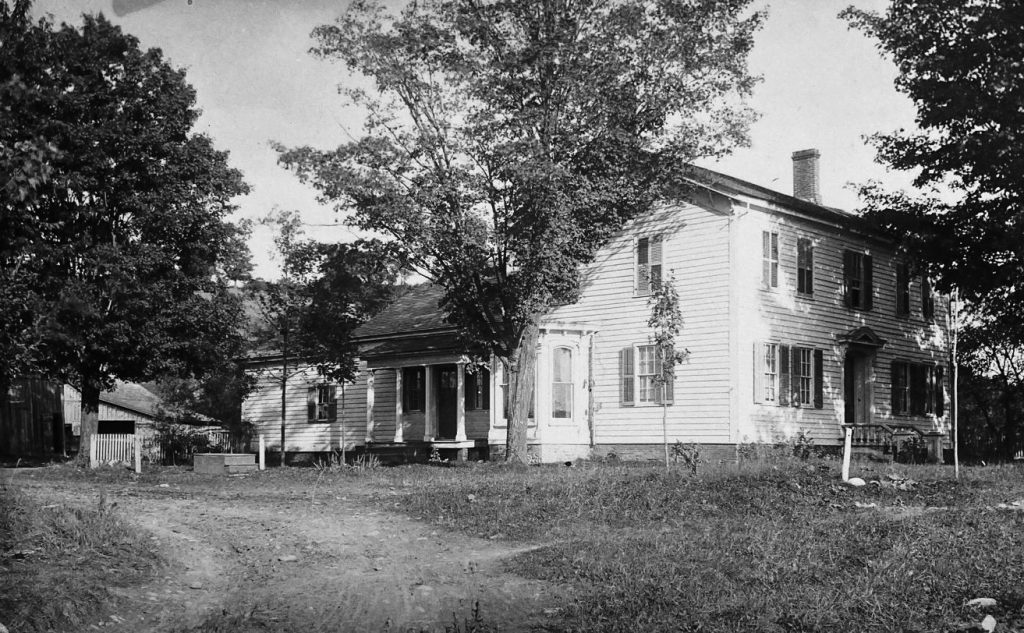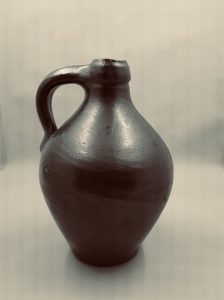
We have one item in our collection from the Conable family that we have shared previously, but it has such a terrific story, it’s worth sharing again! This unassuming little brown jug featured in the photos was

In the collection of Cortland County Historical Society
used as a ketchup bottle for years in the Frederick Conable household. However, the jug was found by Frederick’s father, David Conable, near the Village of Fabius, near the road and behind a log. It was half-filled with whiskey! The thrifty Mr. Conable brought it home for use and it remained in the family. The Conable family is one of my favorite families to talk about because we have some wonderful examples of items in our collection that help to tell the stories of their lives. What unexpected treasure from your family do we have here at CCHS? You should make it a point to come in and learn about your family’s history! We are always happy to help you on your journey into the past! ~Tabitha
